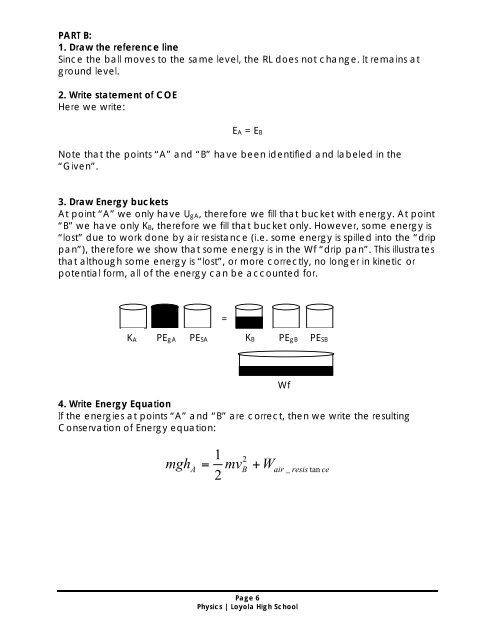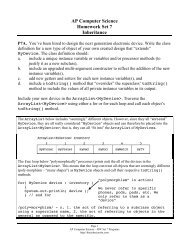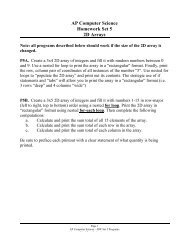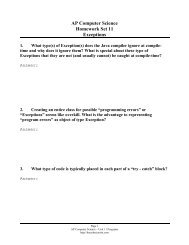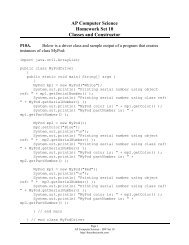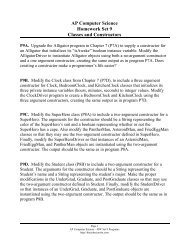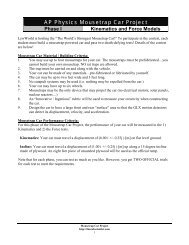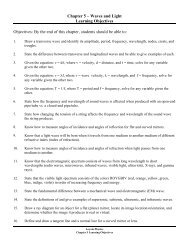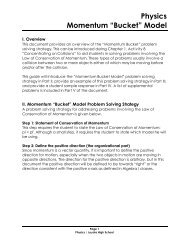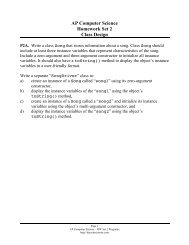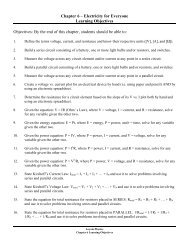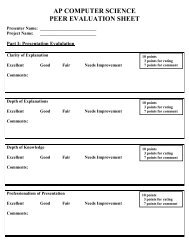Physics Energy “Bucket” Model - thecubscientist.com
Physics Energy “Bucket” Model - thecubscientist.com
Physics Energy “Bucket” Model - thecubscientist.com
Create successful ePaper yourself
Turn your PDF publications into a flip-book with our unique Google optimized e-Paper software.
PART B:<br />
1. Draw the reference line<br />
Since the ball moves to the same level, the RL does not change. It remains at<br />
ground level.<br />
2. Write statement of COE<br />
Here we write:<br />
EA = EB<br />
Note that the points “A” and “B” have been identified and labeled in the<br />
“Given”.<br />
3. Draw <strong>Energy</strong> buckets<br />
At point “A” we only have UgA, therefore we fill that bucket with energy. At point<br />
“B” we have only KB, therefore we fill that bucket only. However, some energy is<br />
“lost” due to work done by air resistance (i.e. some energy is spilled into the “drip<br />
pan”), therefore we show that some energy is in the Wf “drip pan”. This illustrates<br />
that although some energy is “lost”, or more correctly, no longer in kinetic or<br />
potential form, all of the energy can be accounted for.<br />
=<br />
KA<br />
PEgA<br />
PESA<br />
KB<br />
PEgB<br />
PESB<br />
Wf<br />
4. Write <strong>Energy</strong> Equation<br />
If the energies at points “A” and “B” are correct, then we write the resulting<br />
Conservation of <strong>Energy</strong> equation:<br />
1<br />
mgh = mv + W<br />
2<br />
2<br />
A B air_<br />
resistance<br />
Page 6<br />
<strong>Physics</strong> | Loyola High School


